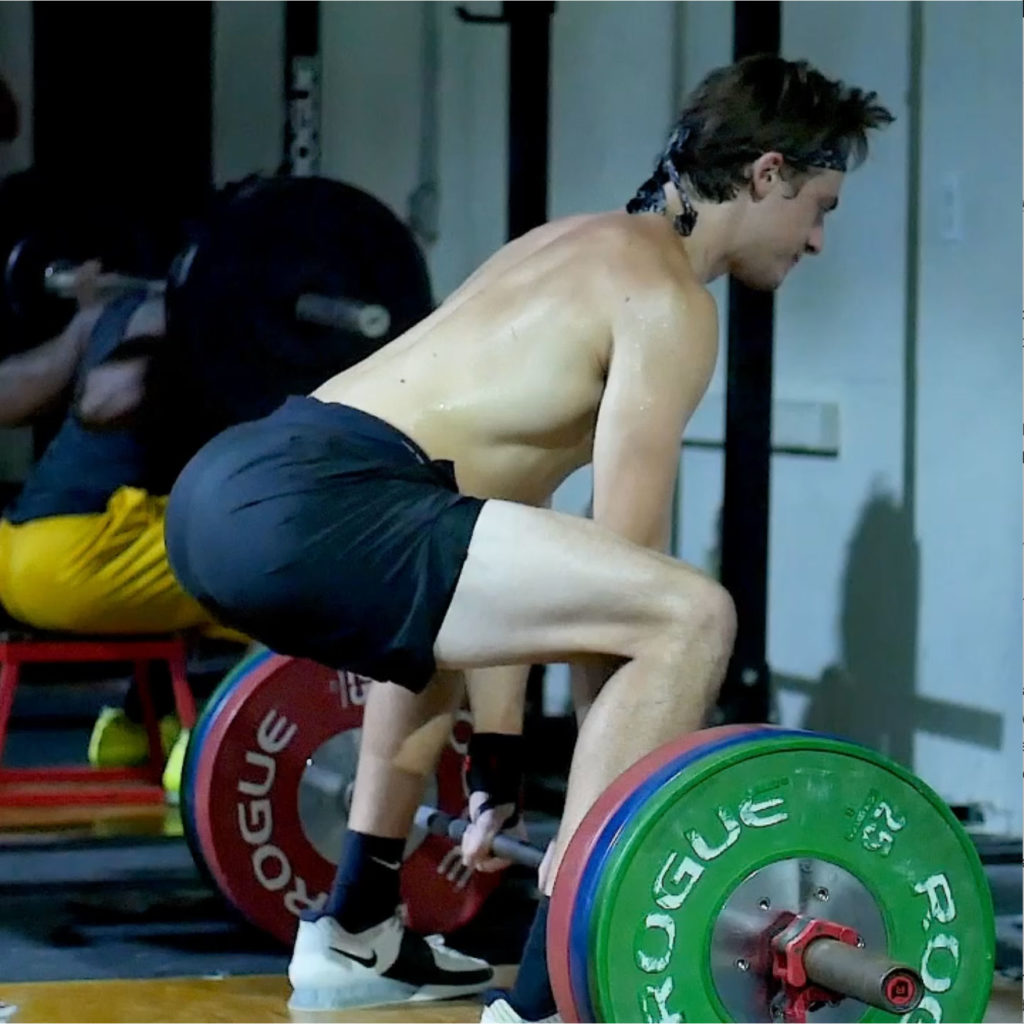
Every athlete should be focused on developing more speed and strength. In many conventional approaches to strength and conditioning, these components are trained separately when they are related (Baker, 1995). The secret to how fast an athlete can run or jump is determined by the amount of force the athlete can apply to the ground in all different directions. Therefore, enhancing athleticism isn’t just determined by how strong and athlete can get.
The biggest challenge for athletes is that when they want to achieve a dynamic athletic movement like jumping, sprinting, or throwing, they usually do not have a lot of time to do this. Evidence suggests that an athlete needs 0.3 to 0.4 seconds or more to maximize force production at all levels of the sport (Rhea, Ball, Phillips, & Burkett, 2002). Evidence also suggests that the traditional squat and deadlift exercises take about 0.6 seconds to complete the movement (Elliot, Wilson, & Kerr, 1989).
These lifts may seem like they take a very short amount of time but when it comes to high-velocity movements the time intervals are shorter. When it comes to athletic movements like running and jumping it usually takes less than 0.3 seconds to maximize forces to produce the movement. Evidence actually suggests it is closer to 0.1 and 0.2 seconds (Heinecke, Jovick, Cooper, & Wiechert, 2004). This is more proof that strength is not the main component of force production. The rate of force development (RFD) is the best way to define the source of power in most athletic movements.
It is important to note that just because an athlete is very strong doesn’t mean that athlete can generate their force quickly (Garhammer, 1993). Most resistance programs that attempt to train more explosive strength usually train the athlete to just move forces quickly to create adaptions in RFD. The major flaw in this methodology is that when moving a resistance quickly most of the movement is used to decelerate the resistance (Cronin, McNair, & Marshall, 2003). Evidence suggests that using variable or accommodated resistance training decreases the deceleration period to enhance RFD (Behm, 1988). Evidence also suggests using this method gives the athlete the advantage of generating both high force and high-power levels when performing a variable resistance exercise (Ebben, & Jensen, 2002).
Technically the athlete must work harder to increase muscle activity during the concentric phase of an exercise that uses variable or accommodated resistance training. This is even more effective when elastic bands are used to create this effect which results in a greater increase in the RFD.
The only limitation with the variable or accommodated resistance training method is that there has been little research on the topic. The evidence that brought this methodology to the center of the debate was Wallace et al. (2006) and Newton et al. (2002). They both examined the effects of RFD on variable resistance training. Wallace et al. (2006) discovered the when using elastic bands variables resistance training improved peak force and peak power. Newton et al. (2002) determined that the enhancements of velocity and power were much higher earlier in the phases of the exercises or lifts when using variable resistance training.
Reference
Baker, D. (1995). Selecting the appropriate exercises and loads for speed strength development. Strength and Conditioning Coaches 3, 8-16.
Behm, D. G. (1988). Surgical tubing for sport and velocity-specific training. National Strength and Conditioning Association Journals, 10, 66-70.
Cronin, J. B., McNair, P. J., & Marshall, R. N. (2003). Force-velocity analysis of strength training techniques and load: Implications for training strategy and research. Journal of Strength and Conditioning Research, 17, 148-155.
Ebben, W. P. & Jensen, R. L. (2002). Electromyographic and kinetic analysis of traditional, chain, and elastic band squats. Journal of Strength and Conditioning Research, 16, 547-550.
Elliot, B. C., Wilson, G. J., & Kerr, G. K. (1989). A biomechanical analysis of the sticking region in the bench press. Medicine & Science in Sports & Exercise, 21, 450-462.
Garhammer, J. (1993). A review of power output studies of Olympic and powerlifting: Methodology, performance, and evaluation tests. Journal of Strength and Conditioning Research, 7, 76-89.
Heinecke, M., Jovick, B., Cooper, Z., & Wiechert, J. (2004). Comparison of strength gains in variable resistance bench press and isotonic bench press. Journal of Strength and Conditioning Research, 18, e10.
Newton, R. U., Robertson, M., Dugan, E., Hanson, C., Cecil, J., Gerber, A., Hill, J., & Schwier, L. (2002). Heavy elastic bands alter force, velocity, and power output during back squat lift. Journal of Strength and Conditioning Research, 16, 13.
Rhea, M. R., Ball, S. D., Phillips, W. T., & Burkett, L. N. (2002). A comparison of linear and daily undulating periodized programs with equated volume and intensity for strength. The Journal of Strength and Conditioning Research, 16, 250-255.
Wallace, B. J., Winchester, J. B., & McGuigan, M. R. (2006). Effects of elastic bands on force and power characteristics during the back squat exercise. Journal of Strength and Conditioning Research, 120, 268-272.

